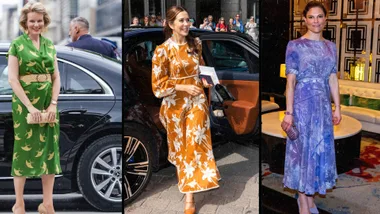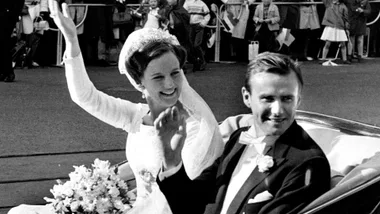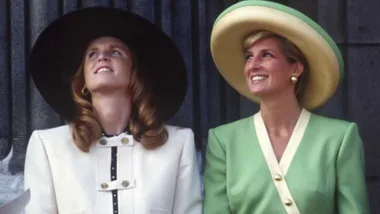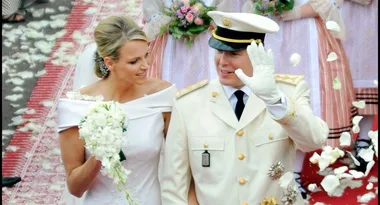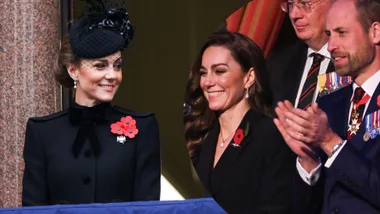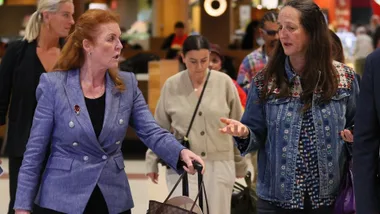Social media has gone into meltdown discussing the nature of how pregnant Meghan Markle cradles her baby bump.
Some have accused her of not acting normally for touching her belly so enthusiastically, accusing the Duchess of ‘overdoing it.’
But exactly what does a body language expert think of her behaviour and is it ‘normal’?

According to Australian expert Louise Mahler, apparently not!
‘No one holds their baby bump like that. It looks like an industry super advert!’ Louise tells New idea.
The expert was referring to the iconic television advert for Australian Super – which features people cupping their hands in front of them.
‘It is not a natural position for hands,” Louise continues.
“All the positions look manufactured.
“As an actress Meghan knows where the lights are the silhouette. She is ‘workin’ it” baby. I am thinking she is going for the ‘Virgin Mary’ pose,’ Louise adds.
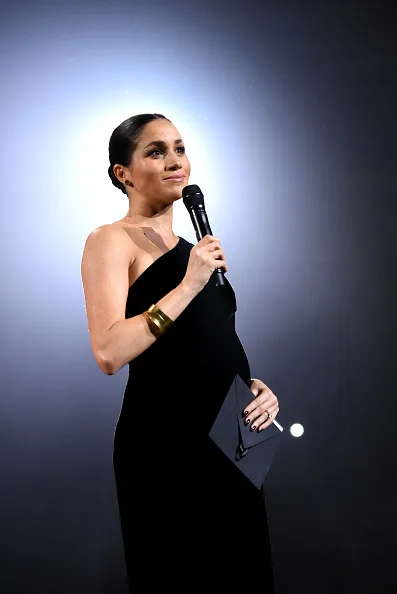
But other experts indicate a woman holding her belly while pregnant could be a sign of wanting to bond with their unborn child.
A new study has shown that foetuses respond positively to their mother rubbing her belly.
Researchers at the University of Dundee in Scotland discovered that pregnant women that rubbed their bellies, bonded better with their babies that those that didn’t.
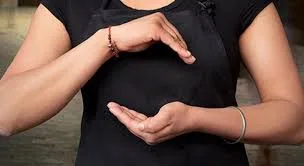
Her gestures “will have a profound effect on her baby,” explained Katherine Graves, founder of KG hypnobirthing to AOL.
‘It’s a positive thing for both mum and baby to touch and reassure baby, which is vital for babies bonding and well being, staving off postnatal depression and facilitating healthy connection for all,” she said.
“It has been shown time and time again that babies recognise what they have experienced in the womb after they are born.”
